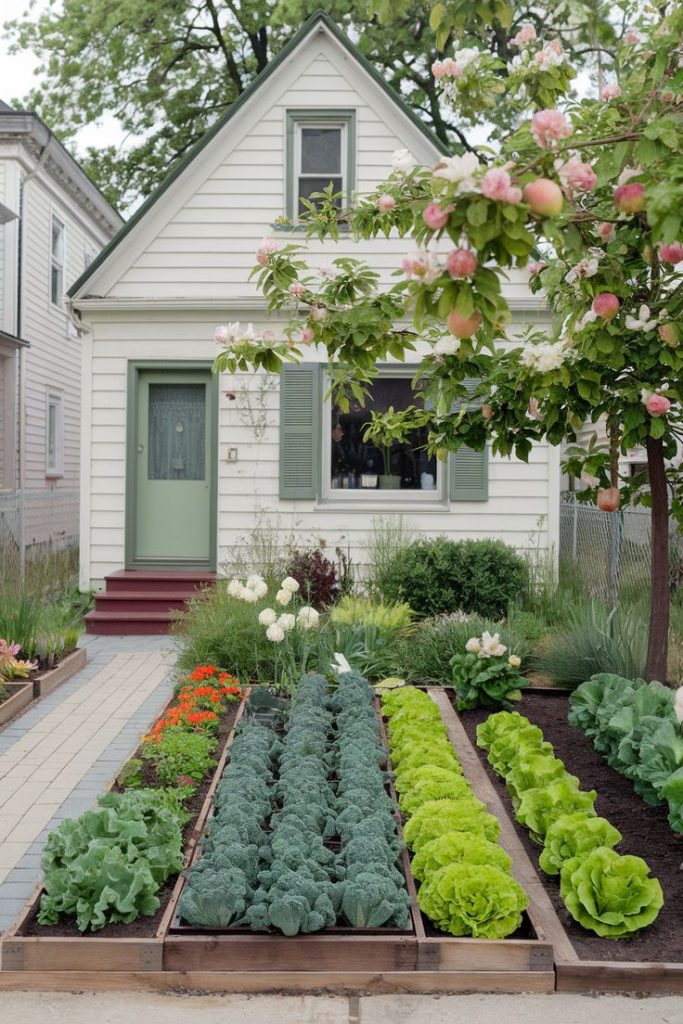Starting a backyard garden can feel like an intimidating task, especially if you’ve never planted anything before. The world of soil, seeds, and sunlight can seem complex and full of potential pitfalls. But the truth is, with a simple, step-by-step approach, you can successfully grow your own fresh vegetables and enjoy the unmatched satisfaction of eating food you grew yourself.
Here’s a beginner’s guide to building a backyard food freedom from scratch, with no experience required.
Step 1: Start Small and Manageable
The most common mistake new gardeners make is to take on a project that is too big. A large, ambitious garden can quickly become a source of frustration and burnout. Instead, start with a small, manageable space.
- A 4×4-foot raised bed is an excellent option. It’s easy to reach into from all sides, simple to maintain, and can produce a surprising amount of food.
- You could also use a few large containers on a sunny patio or balcony.
Step 2: Location, Location, Location
The success of your garden hinges on one thing: sunlight. Most vegetables need at least 6-8 hours of direct sunlight per day to thrive.
- Observe Your Yard: Spend a day observing your backyard. Watch where the sun hits most consistently throughout the day. This is where your garden needs to be.
- Proximity to Water: Choose a spot that is close to a water source. Lugging a heavy watering can or a long hose across your yard every day will quickly become a chore.
Step 3: Prepare Your Soil
Your plants’ health is directly tied to the health of your soil. For a beginner, a raised bed is a great solution because it allows you to bypass the existing soil in your yard, which may be full of weeds and rocks.
- For Raised Beds: Fill your bed with a high-quality soil mix from your local garden center. A good blend is often a “triple mix” of topsoil, compost, and an organic material like peat moss to improve drainage.
- For In-Ground Gardens: If you’re planting directly in the ground, clear the area of all grass and weeds. Then, mix a generous layer of compost into the top 6-8 inches of the soil with a shovel or garden fork. This will enrich the soil and improve its structure.
Step 4: Choose Your Plants Wisely
For your first season, set yourself up for success by choosing plants that are known for being easy and forgiving.
- Lettuce and Spinach: These leafy greens grow quickly and can often be harvested multiple times. They also tolerate some shade.
- Radishes: The ultimate fast-growing plant! Radishes can be ready to harvest in as little as three weeks.
- Green Beans: Both bush beans and pole beans are low-maintenance and high-yield. They are an excellent choice for a productive first garden.
- Zucchini: These plants are famous for their abundant harvests. A single plant can often produce more squash than a small family can eat.
- Cherry Tomatoes: While all tomatoes are rewarding, cherry tomatoes are particularly hardy and forgiving, making them a perfect starting point.
Step 5: Planting and Spacing
Once your soil is ready and you have your plants, it’s time to get them in the ground. You have two options:
- Seeds: Follow the instructions on the seed packet for planting depth and spacing. Planting seeds is more economical but takes a bit longer.
- Seedlings: Also known as “starts,” these are small plants from a nursery. They are more expensive but give you a head start and a higher success rate.
Make sure to give your plants enough room to grow. Overcrowding can lead to poor yields and diseases. A good rule of thumb is to check the plant tag for recommended spacing.
Step 6: The Basics of Care (Watering and Weeding)
A little bit of consistent effort goes a long way in the garden.
- Watering: Water deeply a few times a week rather than a light sprinkle every day. This encourages the roots to grow deeper, making the plant more resilient. The best time to water is in the morning to prevent evaporation.
- Weeding: Weeds compete with your plants for water and nutrients. Spend a few minutes each day pulling weeds by hand. A layer of mulch can also help suppress weeds and retain soil moisture.
Conclusion
Starting a backyard garden is a journey of learning and discovery. By following these simple steps, you’ll be well on your way to a fun, productive, and delicious first season. The simple pleasure of harvesting your own food is a reward that is well worth the effort.








